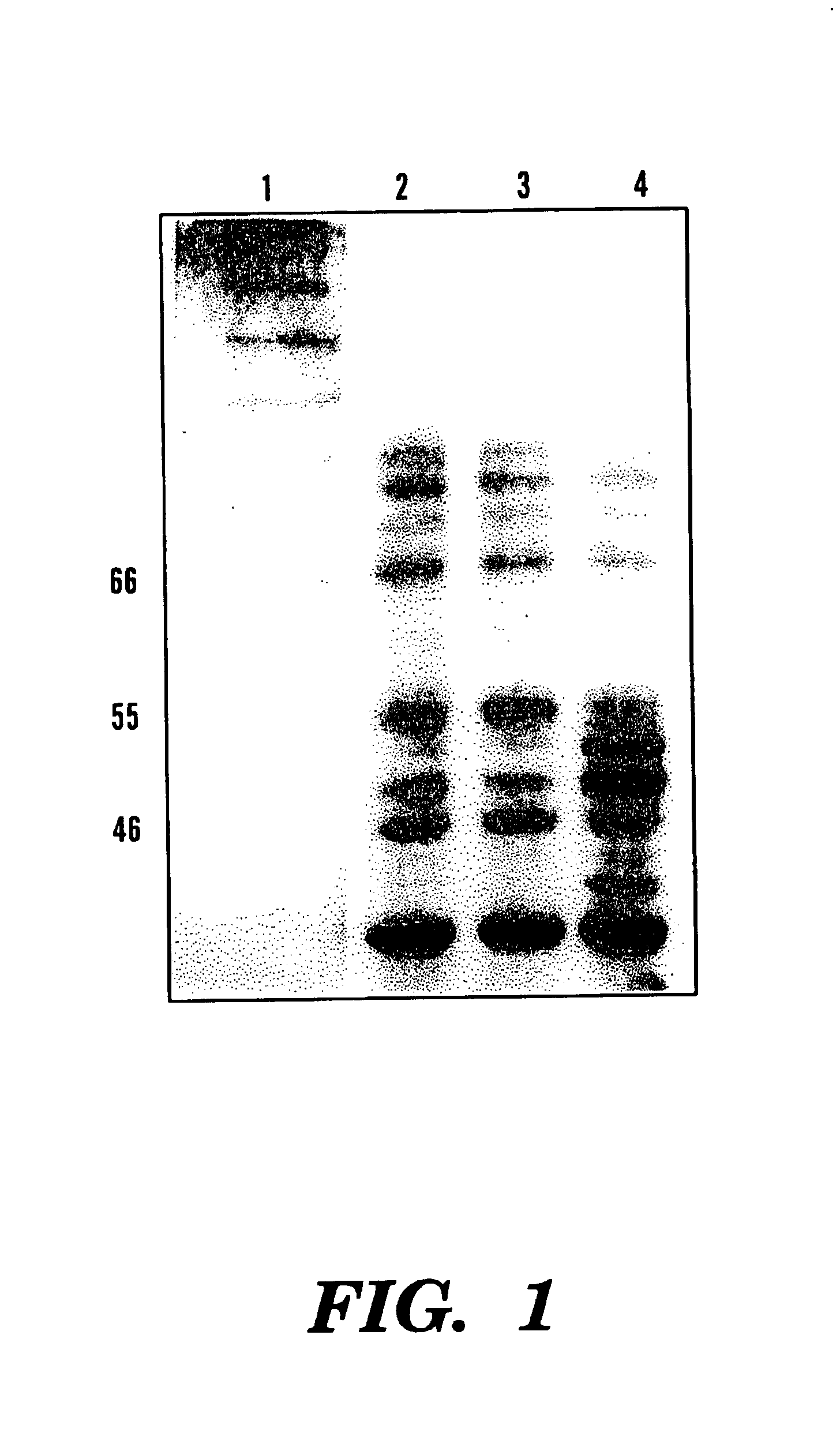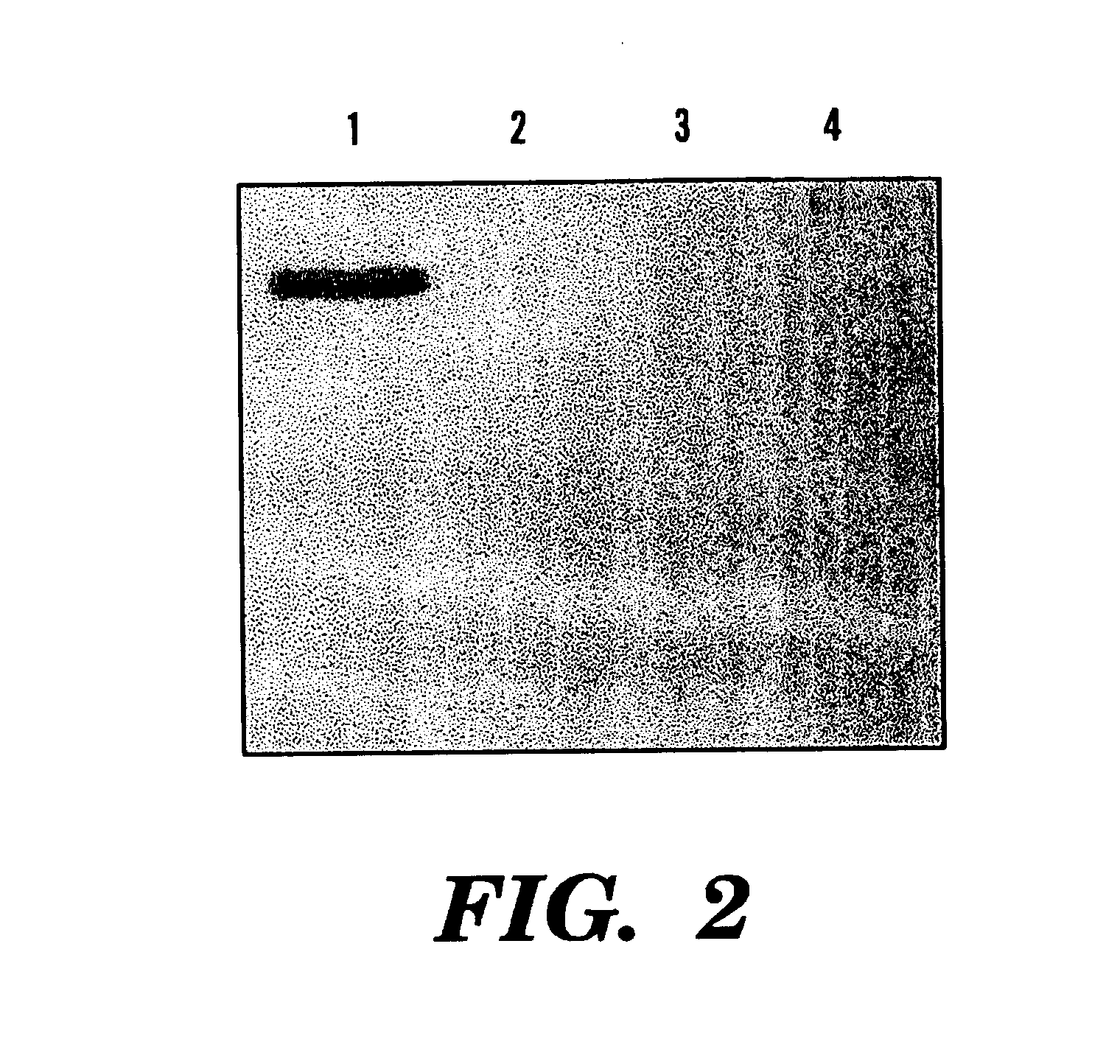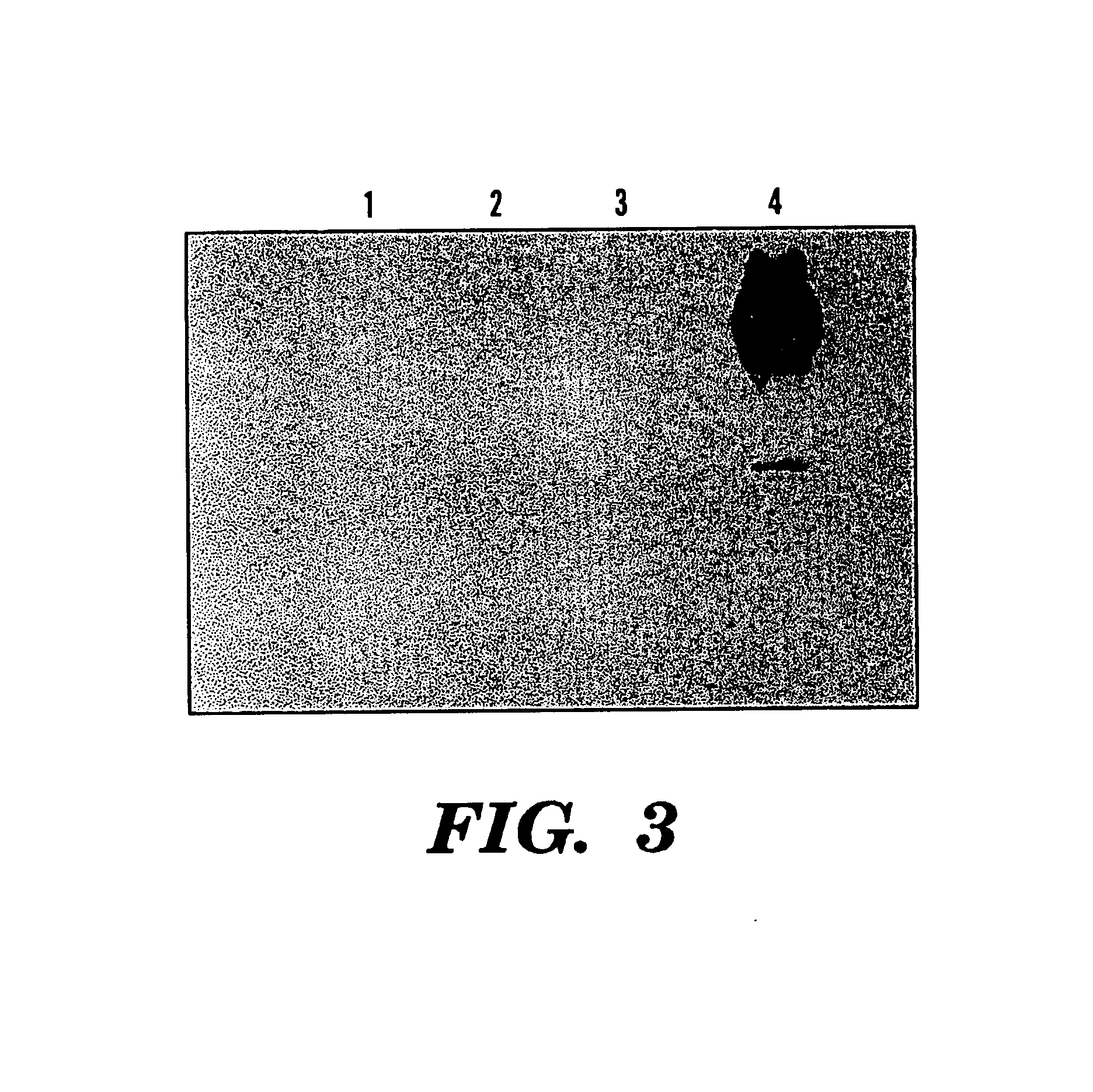Overexpression of phytase genes in yeast systems
a technology of phytase and yeast, which is applied in the field of producing phytase in yeast, can solve the problems of inability to meet the needs of inorganic p supplementation, impede the practical use of animal industry, and phytase produced from i>a. niger/i>is presumably not the safest source for human food manufacturing
- Summary
- Abstract
- Description
- Claims
- Application Information
AI Technical Summary
Benefits of technology
Problems solved by technology
Method used
Image
Examples
example 1
Materials and Methods for Overexpressing PhtyA in E. Coli, S. Lividans, and a Saccharouiyces System
[0069]Phytase gene, host strains, and expression plasmids. Phytase gene, phyA, was kindly provided by Dr. E. J. Mullaney of the USDA. The gene (GenBank Accession number M94550) was contained in plasmid pMD4.21 in E. coli strain HB101. A 2.7 kb SphI fragment of A. niger DNA contained the coding region of the deglycosylated phytase and its 5′ and 3′ flanking sequences. A plasmid containing the signal peptide sequence, Spxy, of the active xylanase gene of Aureobasidum pullulans (GenBank Accession number U10298) was kindly provided by Dr. X. L. Li of the University of Georgia. The E. coli strain DH5α was used as an initial host for all the recombinant plasmids. In order to express phyA in E. coli, the expression vector, pET25b(+) (Novagen, Madison, Wis.) and the expression host, BL21 (DE3)pLysS, were used. In order to express phyA in S. lividans TK 24, plasmid pSES1 (Jung, E. D. et al., “D...
example 2
Expression of PhyA in E. coli
[0081]Four hours after the induction, a specific band (˜55 kDa) was viewed in SDS-PAGE (12.5%) of the soluble cell fraction, compared to the only expression vector transformed control (See FIGS. 1 and 2). This band represented 3.8% of the total soluble protein of this fraction. Correspondingly, northern analysis showed overcxpression of phyA mRNA in these phytase gene transformants and no signal was viewed in the control cells (See FIG. 3).
[0082]In order to optimize phytase protein expression, the time course and the effects of a series of factors on the expression were studied. These factors included incubation temperature (30 and 37° C.), medium pH (4.0, 5.0, 6.0, 7.0, 8.0, and 9.0), anaerobiosis (adding sterile mineral oil on the top of the growing cells), inorganic phosphate level in the medium (Dassa, E. et al., “The Acid Phosphatases with Optimum pH of 2.5 of Escherichia coli,” J. Bio. Chem., 257:6669-76 (1982), which is hereby incorporated by ref...
example 3
Expression of PhyA in S. lividans
[0084]Heterologous genes have been expressed in S. lividans, and the resulting products secreted into the medium with enzymatic activity (Ghangas, G. S. et al., “Cloning of the Thermomonospora Fusca Endoglucanase E2 Gene in Streptomyces Lividans: Affinity Purification and Functional Domains of the Cloned Gene Product,”Appl. Environ. Microbiol., 54:2521-26 (1988); Wilson, D. B., “Biochemistry and Genctics of Actinomycete Cellulases,”Crit. Rev. Biotechnol., 12:45-63 (1992); Jung, E. D. et al., “DNA Sequences and Expression in Streptomyces Lividans of an Exoglucanase Gene and an Endoglucanase Gene from Thermomonospora Fusca,” Environ. Microbiol., 59:3032-43 (1993), which are hereby incorporated by reference). Similarly, phyA gene was expressed in S. lividans and the protein was introduced into the medium, as shown in a specific band in the SDS-PAGE analyzed medium samples (See FIGS. 5 and 6). This suggested that the signal peptide from endoglucanase E2...
PUM
| Property | Measurement | Unit |
|---|---|---|
| Temperature | aaaaa | aaaaa |
| Temperature | aaaaa | aaaaa |
| Volume | aaaaa | aaaaa |
Abstract
Description
Claims
Application Information
 Login to View More
Login to View More - R&D
- Intellectual Property
- Life Sciences
- Materials
- Tech Scout
- Unparalleled Data Quality
- Higher Quality Content
- 60% Fewer Hallucinations
Browse by: Latest US Patents, China's latest patents, Technical Efficacy Thesaurus, Application Domain, Technology Topic, Popular Technical Reports.
© 2025 PatSnap. All rights reserved.Legal|Privacy policy|Modern Slavery Act Transparency Statement|Sitemap|About US| Contact US: help@patsnap.com



